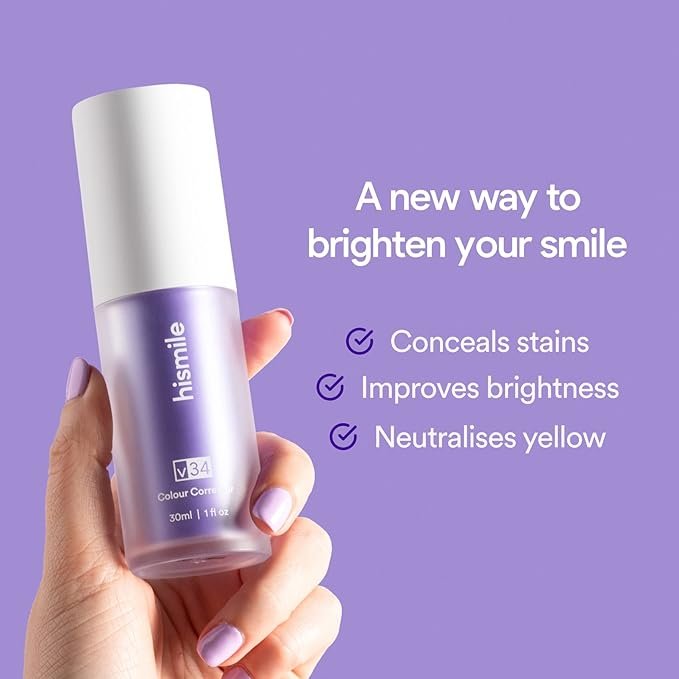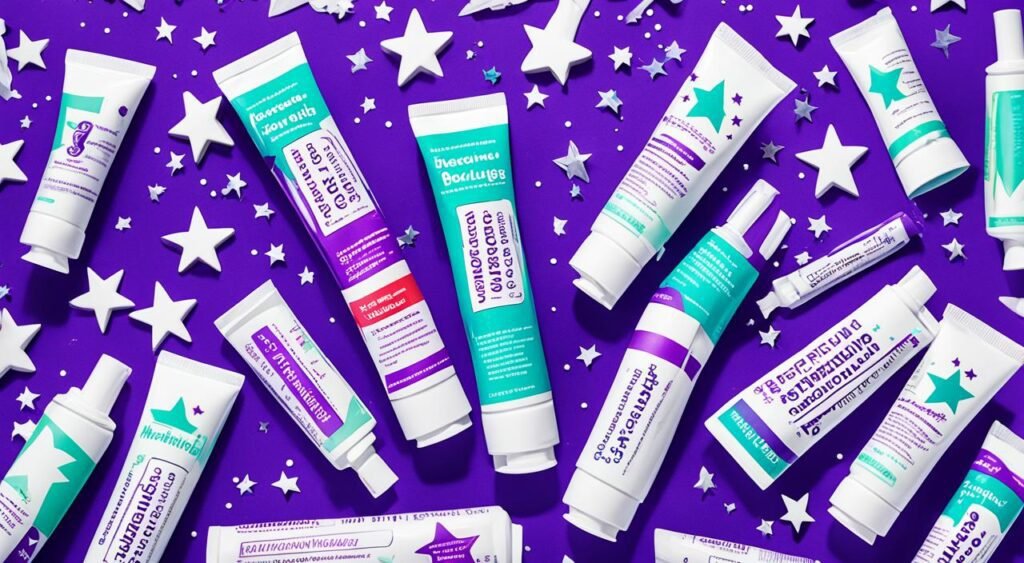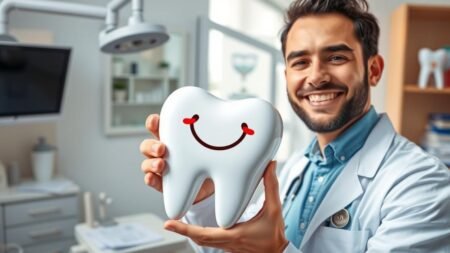In your quest for that brilliant smile, you may have stumbled across the latest trend: purple toothpaste. Like a whisper of intrigue, it promises a transformation of your teeth’s appearance, leaving you to ponder, Each morning as you reach for that tube, the vibrant hue of hismile purple toothpaste beckons with claims of pearly white teeth, yet you can’t help but wonder if it’s the key to unlocking a brighter smile or merely a play on your desires.
Your skepticism is justified; after all, the health of your smile is not a commodity to be taken lightly. From the gravity of first impressions to the joy in a shared laugh, your teeth play a subtle yet pivotal role in life’s daily canvas. And so, you seek truths beyond dazzling marketing—ssubstantive, evidence-based answers to the echoing question: Can the allure of purple toothpaste truly translate into an enviable radiance?
Let’s peel back the layers of curiosity and skepticism to unravel fact from fiction. As informed consumers, you deserve to understand what goes behind the vibrant facade of the purple paste. Does it merit a place in your daily routine, or is it just a fleeting trend without merit? Together, we’ll dive into the heart of the matter, assessing hismile purple toothpaste rigorously and exploring its claims, ingredients, and real-world performance against the backdrop of dental science.
So, join us on this nuanced journey of discovery as we explore whether purple toothpaste lives up to the hype and whether your search for the holy grail of oral care has indeed come to a fruitful conclusion. Let’s unveil the truth and see if we can smile with newfound confidence or turn back to our trusted, time-honored dental allies.
The Science Behind Purple Toothpaste
When you’re considering a shift to a novel oral care product like purple toothpaste, understanding the science behind it can help you make an informed decision. Purple toothpaste isn’t just a trend; it’s rooted in color-correcting principles applied in an innovative way to enhance the whiteness of your teeth.
Understanding Color Correcting Principles
At the heart of how color correction works is the theory of complementary colors. In the same way that makeup artists use green concealer to neutralize redness on the skin, purple toothpaste employs purple pigments to counteract yellow tones in teeth enamel. This interaction helps create the appearance of a brighter, more radiant smile after brushing.
Ingredients Commonly found in the toothpaste
Diving into the toothpaste ingredients, you’ll often find a common roster including hydrogen peroxide, known for its bleaching effect, as well as baking soda and activated charcoal, which offer gentle abrasion and detoxification benefits, respectively. These commonly used ingredients in purple toothpaste come together to not only correct color but also provide a deep clean and aid in the tooth-whitening process.
How Purple Pigments Interact with Teeth Enamel
The purple pigments in toothpaste don’t just provide an instant cosmetic boost—their benefits might be more than skin deep. While they adhere to the tooth enamel, they also work to lift surface stains over time, contributing to a whiter smile with consistent use. However, it’s essential to consider the potential long-term interaction with tooth enamel and to seek products that balance efficacy with safety.
Remember that while purple toothpaste can be a quick fix to dial up the dazzle on your smile, it shouldn’t replace your regular oral hygiene routine. For the best results, pair it with your dentist’s recommended practices for oral care.
Comparing to Traditional Whitening Methods
When you’re exploring options to brighten your smile, you might find yourself comparing the effectiveness of purple toothpaste with established traditional whitening methods. Each option offers unique benefits and limitations, which are worth considering before making an informed decision.

Hismile v34 Colour Corrector, Tooth Stain Removal, Teeth Whitening Booster, Purple Toothpaste, Colour Correcting
No harsh peroxides, safe for daily use
Traditional teeth-whitening methods, such as whitening strips and dental bleaching, have long been the go-to choices. These methods typically involve chemical agents like hydrogen peroxide or carbamide peroxide, which penetrate the tooth enamel and dentin to remove intrinsic stains. While often effective, they can also lead to tooth sensitivity and require adherence to certain protocols to maintain results.
Purple toothpaste, a newer entrant in the teeth-whitening market, uses color-correcting theory to visibly neutralize yellowish tints. By depositing purple pigments onto the teeth, it creates an optical illusion of whiteness without altering the tooth structure. It’s a convenient and non-invasive method, but it may offer less dramatic results than traditional treatments.
| Whitening Method | Benefits | Limitations |
|---|---|---|
| Traditional whitening strips | Proven efficacy and professional-grade options are available. | Can cause sensitivity; requires time commitment |
| Dental Bleaching | Fast results, performed by professionals | Higher cost, risk of overuse |
| Purple Toothpaste | Easy to use daily, gradually improves appearance | Subtler results: less research available |
When you’re comparing purple toothpaste to traditional whitening methods, it’s crucial to align your expectations with the method’s capabilities. For those seeking a mild enhancement, purple toothpaste may suffice. However, if you desire a more significant change in tooth color, professional treatments might be more appropriate.
Ultimately, no single whitening method is superior for everyone. Your decision should be based on personal preferences, tooth sensitivity, lifestyle factors, and individual oral health. As with any dental product, consult with your dentist to choose the safest and most effective option for your smile.
Is purple toothpaste safe for daily use?
With the growing popularity of purple toothpaste for teeth whitening, it’s essential to address concerns regarding its abrasivity, the long-term effects on tooth enamel, and the overall toothpaste’s safety. The vivid hue of purple toothpaste may promise radiant results, but it’s imperative to examine whether these effects come at a cost to your dental health. Here, we delve into the science behind the dazzling trend and provide insights on what to look for in purple toothpaste brands to ensure adherence to safety standards for purple toothpaste.
Assessing the Abrasivity
When it comes to the abrasivity of purple toothpaste, understanding the RDA value, which stands for Relative Dentin Abrasivity, is crucial. A high RDA value can accelerate tooth enamel erosion, leading to increased tooth sensitivity. Therefore, it’s important to choose products with an optimal balance that effectively removes stains without damaging enamel.
Long-term Effects on Tooth Enamel and Sensitivity
Continued use of any toothpaste with high abrasivity can lead to undesired long-term effects, such as irreversible enamel damage. Enamel erosion not only compromises the aesthetic of teeth but also exposes you to heightened sensitivity and potential decay. Hence, the lasting effects of purple toothpaste should be a significant factor in your daily oral hygiene routine.
Verifying the Safety Standards of Purple Toothpaste Brands
It is vital to ensure that the purple toothpaste brands you use comply with the prescribed safety standards. Reputable brands often undergo rigorous testing and receive approval from dental associations. Look for seals of acceptance from entities such as the American Dental Association (ADA) on packaging to ensure the product meets guidelines for safety and efficacy.
| Feature | Consideration for Safety |
|---|---|
| RDA Value | It should be low enough to prevent enamel wear but effective for cleaning. |
| Long-Term Usage | Should not contribute to enamel erosion or increased sensitivity. |
| Certifications | Look for ADA acceptance or similar endorsements from reputable dental authorities. |
As you weigh the benefits of adding a touch of purple to your dental regimen, keep in mind these considerations. Ensuring you’re well-informed about the abrasivity of purple toothpaste, the safety standards of purple toothpaste, and its potential long-term effects will help maintain both the health and beauty of your smile.
User Reviews and Testimonials
When considering a new dental hygiene product like purple toothpaste, smart consumers like you often turn to purple toothpaste reviews for insights. By evaluating the abundant user testimonials for purple toothpaste, we’ve distilled both the accolades and grievances that users have shared about their experiences.

Positive feedback commonly highlights how the innovative color-correcting formula contributes to a brighter smile, while some negative comments point out the adjustments users had to make to traditional toothpaste flavors. Below, find a comprehensive display of this real-world input consolidated in a format for your quick assessment.
| Aspect | Positive Feedback | Negative Feedback |
|---|---|---|
| Whitening Effect | Many users report a noticeable difference in the brightness of their teeth. | A few users did not observe the expected whitening results. |
| Taste | A majority enjoyed the unique flavor and found it refreshing. | Some found the taste unusual compared to their regular toothpaste. |
| Usability | Regular users appreciate the ease of integration into daily routines. | New users sometimes struggled with the color presentation on their toothbrush. |
| Price | Customers feel the product is a cost-effective alternative to professional treatments. | Cost-conscious users opined that it’s pricier than standard toothpaste options. |
| Overall Satisfaction | A significant number of users would recommend purple toothpaste to others. | A handful of customers were not satisfied and returned to traditional products. |
Remember, while purple toothpaste reviews and user testimonials can be incredibly helpful, personal experience is an integral part of figuring out what works best for your dental health needs.
Does It Deliver on Its Promises?
Throughout our exploration of purple toothpaste, we’ve delved into the science of color correction, the specific ingredients that contribute to the touted whitening effects, and real-world feedback from users. As you consider incorporating purple toothpaste into your oral hygiene routine, it’s vital to weigh its effectiveness against traditional whitening methods. While innovations in dental care can be exciting, the truth lies in how these products perform daily and over time.
One can’t help but ask: Does purple toothpaste work as well as it claims? The answer is not a simple yes or no. It’s true that purple toothpaste may temporarily alter the perception of tooth color, thanks to the optical illusions borne out of color theory. However, regarding long-term whitening, the results may vary depending on factors like your dietary habits, oral hygiene practices, and the natural color of your teeth. While some users report satisfaction with the results, others caution against expecting miraculous transformations. Thus, the overall effectiveness of purple toothpaste appears to be subjective and best ascertained on an individual basis.
Before you add a new tube of purple toothpaste to your shopping cart, it’s advisable to consult with your dentist. Your oral health is unique, and a professional can guide you toward the best products for your needs, considering not only the aesthetic outcomes but, more importantly, your dental health. Remember, a radiant smile starts not with a color-changing toothpaste alone but with comprehensive care and informed choices about the products you use.
FAQ
Does purple toothpaste really work?
Designed to improve oral health and teeth-whitening. However, its effectiveness can vary depending on several factors, including the specific brand and formulation, individual oral health conditions, and consistent usage. It is important to consider scientific evidence, user experiences, and advice from dental professionals when determining if purple toothpaste is right for you.
How does color correction work in purple toothpaste?
Color correction is based on the principle of using complementary colors to neutralize unwanted hues. Purple pigments in the toothpaste interact with the color of teeth, creating the illusion of whiter teeth by counteracting yellow or brown discoloration. This temporary effect can make teeth appear brighter and more visually appealing.
What are the common ingredients found in purple toothpaste?
Purple toothpaste often contains ingredients such as hydrogen peroxide, baking soda, activated charcoal, and various mild abrasives. These ingredients work together to help remove surface stains and whiten teeth. It is important to check the ingredient list and consult with dental professionals if you have any concerns or specific oral health needs.
How do purple pigments in toothpaste interact with tooth enamel?
Purple pigments adhere to the enamel of the enamel of the teeth and can lift surface stains, creating a brighter appearance. However, it is important to note that prolonged use of purple toothpaste or any toothpaste with coloring pigments may pose a risk of enamel erosion if not used correctly. Regular dental check-ups and proper dental care practices are essential to maintaining healthy teeth.
How does purple toothpaste compare to traditional whitening methods?
The effectiveness compared to traditional whitening methods, such as whitening strips, dental bleaching, or professional dental treatments, may vary. Traditional methods may provide more significant and long-lasting whitening results. However, purple toothpaste can be a convenient and cost-effective option for maintaining whiteness, especially when used as part of a comprehensive oral care routine.
Is purple toothpaste safe for daily use?
The safety of purple toothpaste for daily use depends on the specific brand, formulation, and individual oral health condition. Some toothpaste brands may have higher abrasivity levels, which can potentially lead to enamel erosion and tooth sensitivity if used excessively or incorrectly. It is crucial to choose reputable brands and consult with dental professionals for personalized advice on the safety and frequency of use.
What are the long-term effects of using purple toothpaste?
Prolonged use of purple toothpaste may pose risks such as enamel erosion and increased tooth sensitivity. This can occur if the toothpaste has high abrasivity or if it is used excessively. It is important to balance the benefits of teeth whitening with oral health considerations. Regular dental check-ups and following proper dental care practices are vital for maintaining oral health when using purple toothpaste or any other whitening products.
How can I verify the safety standards of purple toothpaste brands?
To verify the safety standards of purple brands, look for recognized dental associations or certifications on the product packaging or the manufacturer’s website. These associations, or certifications, often vouch for the safety and efficacy of dental care products. Additionally, researching customer reviews and consulting with dental professionals can provide valuable insights into the reputation and safety of specific toothpaste brands.
Are there any user reviews and testimonials for purple toothpaste?
There are numerous user reviews and testimonials available online for purple toothpaste. It is important to gather information from reputable sources to ensure the accuracy and credibility of these reviews. Reading both positive and negative feedback can give you a more comprehensive understanding of the experiences and outcomes associated with using purple toothpaste.
Does purple toothpaste deliver on its promises?
The effectiveness in delivering its promises can vary depending on individual factors and expectations. While purple toothpaste can provide temporary whitening effects and potentially improve oral health, it is crucial to consider your own oral health needs, consult with dental professionals, and maintain realistic expectations. Your dental professional can provide guidance on whether purple toothpaste is suitable for your specific oral care routine.









3 Comments
Pingback: Best Cat Toothpaste: Keep Your Cat's Teeth Healthy in 2024
Pingback: Top Best Whitening Toothpaste: Dentist Recommended Brand
Pingback: Laser Dentistry for Cavities: Painless Treatment